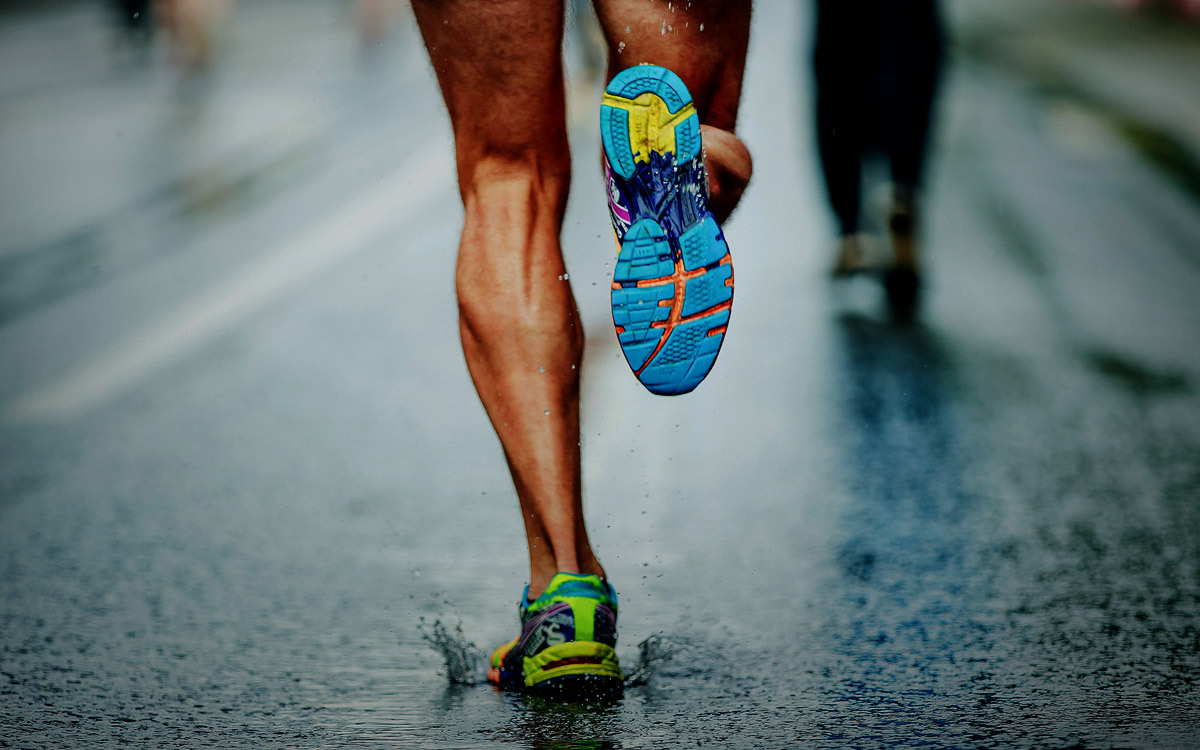The Contoura Algorithm: Embodying Comfort, Performance, and Support
Our proprietary shape algorithm used for the INSITE® Contoura® insole combines the science of custom orthotics with modern footwear design.

Running shoe designers and developers know comfort and support are critical for this high-impact sport with repetitive, often long-lasting movements – and the right running shoe insoles go a long way toward delivering a positive customer experience.
Yet, running shoe insoles are often not prioritized as much as other features of the running shoe, such as the weight, the upper, midsole, tongue, heel, toe box, and the last. Customers are looking for the benefits supported by these features, such as:
Running shoe designers and developers have a lot of needs to meet with running shoes. Runners have many different gaits, foot shapes, foot strikes, and arches, and it can be difficult to meet those needs with a single shoe.
But we would argue that meeting those individual needs is most important when designing and developing a shoe for a high-impact, repetitive sport like running.
The right running shoe can help to prevent injuries, keep runners comfortable over long periods of time, and even improve performance by providing the right amount of comfort and support. Runners tend to have a “go-to” running shoe brand, and that’s not by accident. There’s nothing quite like an energizing, pain-free, fast, or tempo run in which your shoes feel like they’re making your feet fly.
Your brand can give runners that experience with the right running shoe insoles.
What’s The Best Insole for Running Shoes?
We’ve discussed in the past how there are appropriate insoles for every type of shoe. When it comes to sports shoes, the right insole can only be developed by understanding the biomechanics of the particular sport.
Read More: Do Your Shoes and Your Insoles Go Together?
What does that mean? For running shoes, specifically, we would conduct biomechanics research that examines particular responses of the body during a running exercise:
These data points help us develop a highly-customized insole design based on real human movement.
For example, if we find that the majority of runners tested have greater pressure on the heel, low oxygen consumption, muscle responses in the knees and hips, and a touch of overpronation, we would select an insole shape and material that can add support in the right places, reduce hotspots, and redistribute pressure for improved gait impact and stability.
What Insoles for Running Shoes Should Look Like
Actually, it’s not about looks at all. It’s about comfort, performance, and support.
When you select an insole for your running shoe line, it should have certain features that are backed by data and biomechanical research, so you know your running customers will have a positive experience with your shoe.
These features include:
Add the Right Technology to Your Running Shoes to Alleviate Common Concerns
We’re talking about running shoes in this article, but the technology that drives the right insole applies across the board for any shoe line.
Read More: What’s the Best Insole For…
At INSITE, we combine several scientific approaches to the design and development of our insoles, with the goal of understanding how people really move – and how data can help us deliver a comfortable and supportive experience to a majority of wearers.
We look at:
Ergonomic Science: We’re able to apply human factor data from more than 120,000 3D foot scans to improve gait, stability, and biomechanical efficiency, all in one ergonomic insole. Ergonomic science helps create insoles for running shoes that provide the right level of support without compromising on comfort.
Comfort Research: We collect data from plantar pressure mapping, which identifies common pressure points and hot spots, as well as psychometric testing to quantify comfort levels while running. Plus, our open-cell PU foams mimic human foot tissue, adding another layer of running comfort.
Balance & Endurance Testing: We use 3D motion capture to track the body’s center of mass in real-time, and combine that data with stability and balance analysis. When designing and developing insoles for running shoes, we apply this technology to ensure optimal performance.
Supporting your running shoe design with insole technology that delivers the comfort and support runners need for this high-impact sport will only resonate positively with your customers and help make your brand their go-to for running shoes.
Our proprietary shape algorithm used for the INSITE® Contoura® insole combines the science of custom orthotics with modern footwear design.
If you’re wondering, “Do I need arch support?” you’re not alone – the need for arch support, and what type, can be hard to determine. Here’s what you should know.
With so much information out there, it can be easy to believe insole myths and harder to know exactly what insole needs you may have, and why.